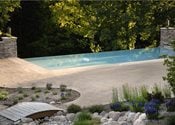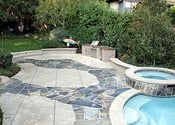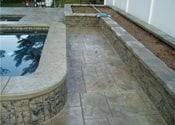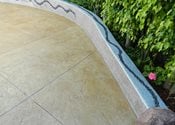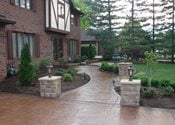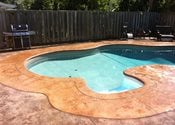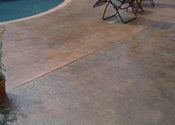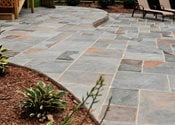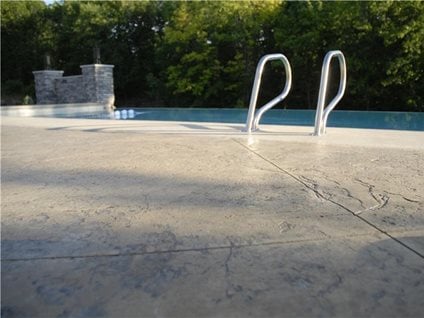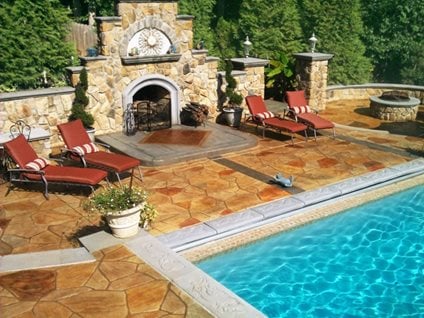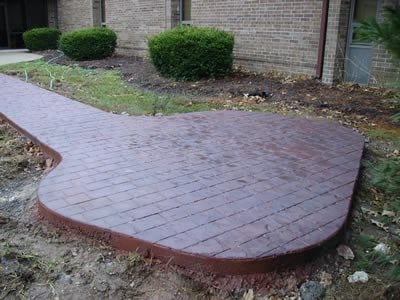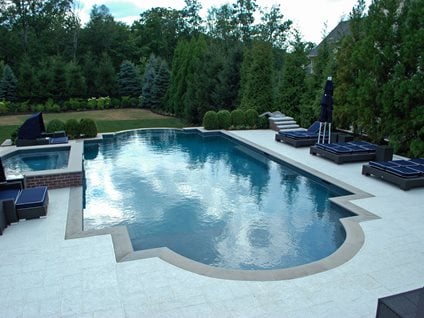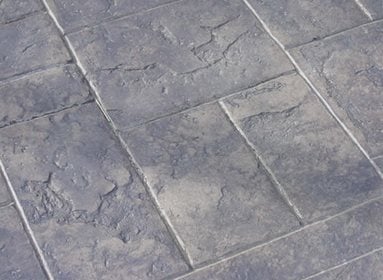Excess antiquing color causes problems
Question: I have a pool deck in which the sealer seems to be flaking off and coming up in some areas. This is not an issue that we have dealt with before, so I am a little concerned. Can you let us know what is occurring and how we can remedy this issue?
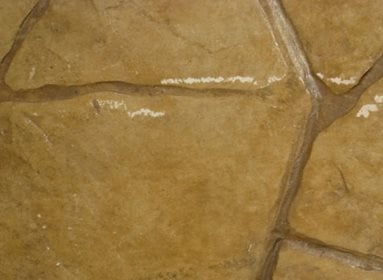
A good rule to work by is that secondary color should make up 5% to 30% of the final color. In this case, the secondary color makes up almost 100% of the surface color, causing sealer failure.
Answer: This is actually one of the most common issues we face with coloring stamped concrete. It is in fact not a sealer issue, but rather the antiquing color that is causing the sealer to fail. The sealer failure can occur within weeks of application, but more often shows up 6 to 12 months down the road.
Imprinted concrete looks pretty bland and unrealistic without highlights or antiquing, which give the pattern definition and color variation. These highlights make the concrete look like stone, tile or whatever natural material the installer is trying to mimic. The highlights can be accomplished in a multitude of ways, with release powder being the most common. Other popular methods include stains, tints, dyes and colored sealers. Virtually any means of getting some contrasting color to stick in the depressions and textured areas of the surface will work. The problem occurs when too much secondary color is present. The depth and type of texture on the imprinting tool will determine the amount of secondary color to use. More aggressive textures with deep grout lines, lots of deep veins, and rough slate or stone surfaces will accommodate more secondary or antiquing color. The opposite holds true for light textures with smoother surfaces and non-aggressive patterns. A good rule to work by is that secondary color should make up 5% to 30% of the final color. In your case, however, the secondary color makes up almost 100% of the surface color.
The real curve ball is that stamped work with such high ratios of secondary color can look amazing and beautiful. Once sealed, the work looks great, the applicator gets paid and everyone is happy. The problem is that you have ticking time bomb, and it is just a matter of time before it explodes. Have you ever considered what secondary color is made of and how it works? No matter whether you use release powder, stains, washes or tints, you are filling the surface pores of the concrete with solid material. Those solids are filling the voids that the sealer needs to fill in order to "bite" or adhere to the concrete. The more secondary color present, the bigger the problem. The sealer will encapsulate the solid color in an attempt to do its job, but if there are no pores to fill, adhesion is compromised, which leads to failure when external forces exceed the ability for the sealer to hold. This is usually why we see these types of failures in the spring, after a winter assault of freeze-thaw cycles, deicing salts and snow shovels. As a result, the sealer lifts up in small circular areas and takes the secondary color with it, since the color is all it had to hold onto. You are then left with a stamped slab that has round, discolored spots. The "discoloration" is actually the base color that should have been visible in the first place, but was covered with too much secondary color.
The repair is fairly simple in theory, but more difficult in practice. The sealer has to be chemically stripped, but the process will usually remove most of the secondary color as well. Once the stripping is complete, you can remove any residual secondary color, give the surface a good cleaning, and then allow it to dry before resealing. The hard part is selling the client on the new "correct" color combination of their patio. What was mostly dark brown with hints of tan is now mostly tan with hints of dark brown.
Find Concrete Stamping Products
